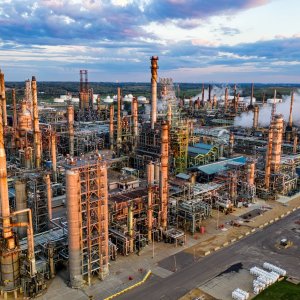Is Mexico Facing Cold Winters, Cold Summers in the Coming Years?

STORY INLINE POST
Today more than ever, Mexico is a benchmark country for the expansion, development, and strategic infrastructure of the natural gas sector. Especially in recent years, the infrastructure network for transport and distribution of natural gas has increasingly expanded strategically to more sectors and commercial and industrial poles in our country. Our commitment in the short and long term during the last 10 years has generated a significant amount in both private and public investment within the sector and in the strategic areas of natural gas.
Mexico is in the process of realizing strategic projects for interconnection, infrastructure and construction of natural gas over the next three to five years. These include the liquefaction plant project within the Interoceanic corridor of the Isthmus of Tehuantepec (CIIT) and tentatively in the Port of Coatzacoalcos; as well as the Puerta al Sureste project developed jointly by TC energy and the Federal Electricity Commission (CFE) and finally, the recent memorandum of understanding for the continuity of the project in the southeast, Cuxtal II, by Engie. These projects will guarantee the necessary supply and availability of natural gas in Mexico over the short and long term. Adding all the infrastructure projects already underway and installed throughout Mexico in the last 10 years, plus all those that are knocking on the door will allow us to have a significant infrastructure network for the transport and distribution of natural gas.
On the other hand, it is important to note that CFE, as the central and guiding axis of all these strategic natural gas projects, will play a significant role in the energy efficiency equation, with the production of energy through the construction of new combined cycle plants and in the modernization of others. This combination of parallel investment between private investors and CFE will trigger an increase in supply and demand of natural gas in the coming years in Mexico. As such, it is essential to continue expanding the national network grid for both commercial and industrial infrastructure in distribution and transportation of natural gas. In the short and long term, we will see a significant expansion of strategic projects related to storage, distribution, and transportation of natural gas. Finally, the natural gas molecule will be transported from the source of extraction in the US to Mexico’s southeast . A great challenge, of course, for Mexico is to establish the infrastructure necessary to ensure the capacity and availability in the coming years throughout all those regions in need of natural gas.
Looking at this from the perspective of economic development and strategic investment, I believe that Mexico is doing just enough to consolidate its network gradually. All these projects that I mentioned above will give Mexico a competitive advantage. We will have both natural gas outlets and inflows both in the Gulf and in the Pacific and by bringing together all the current operational natural gas systems in addition to the systems operated by SISTRANGAS, we will consolidate a significant network to not only be consumers of natural gas but also exporters.
Based on the above, it can be assumed that we are on the right track, with the right vision and with the right development. Of course, all these investments and development are more than necessary for a country that demands and requires considerable amounts of the resources to operate industrial, commercial, and strategic poles in our country. The demand for imported natural gas in Mexico is around 70 percent, which requires that we continue developing more and more infrastructure to be competitive. But on the other hand, and considering the context of the current and present geopolitical and geo economics events happening in the world, such as the war in Ukraine, it makes me wonder what will happen in the next three to 10 years in Mexico.
For reference, 10 years ago, the natural gas molecule was in the range of US$2.5 to 3/MBtu. Currently, the cost of the molecule is plus or minus US$5.6 to 6/ MBtu. The cost is still very competitive versus the cost of other energy resources, such as LP gas or gasoline. But the big question that remains is, until when will these prices be considered competitive for Mexico. In the next three or five years, the US is going to put into operation several LNG terminals that will allow them to export natural gas in greater quantities to Europe. When this happens, the US will have the ability to export and sell natural gas at prices in the range of US$50 to US$80/MBtu or more in Europe or Asia. Which leads me to ask then, what will be the cost of the molecule in Mexico in 2025 or 2027? Perhaps, it will reach US$11 or US$18/MBtu or more. If that is the possible scenario and global geopolitical and macroeconomic variables hold, that makes me wonder what the possible foreseeable future for Mexico will be.
Are we prepared for a potential increase in the price specifically of natural gas? Do private companies or key players in the sector have a strategic business plan for what lies ahead? Will we have the capacity to adapt and use our infrastructure to strengthen and maintain the availability and necessary supply capacity?
I believe that despite the panorama that appears somewhat unfavorable in terms of the price or cost of natural gas, Mexico will be in a favorable and strategic position in the coming years in terms of installed capacity and availability of infrastructure in general and specifically for natural gas. That is why, more than ever, Mexico must continue with its long-term strategic energy development plan, not only betting on greater investments in natural gas infrastructure but also on new technologies and development of new energy production projects, such as the production of green hydrogen through specific means for specific purposes.
We are a large country with non-renewable reserves and quite interesting renewable energy production projects; therefore, our comprehensive energy policy must focus on what we must do correctly to maintain, grow, and consolidate our national energy demand. Although it seems in the short and long term that conditions in Mexico will not be so favorable, everything indicates that, on the contrary, we will be in a strategic and preponderant position.








 By Gamaliel Corral | CEO -
Fri, 01/13/2023 - 12:00
By Gamaliel Corral | CEO -
Fri, 01/13/2023 - 12:00
















